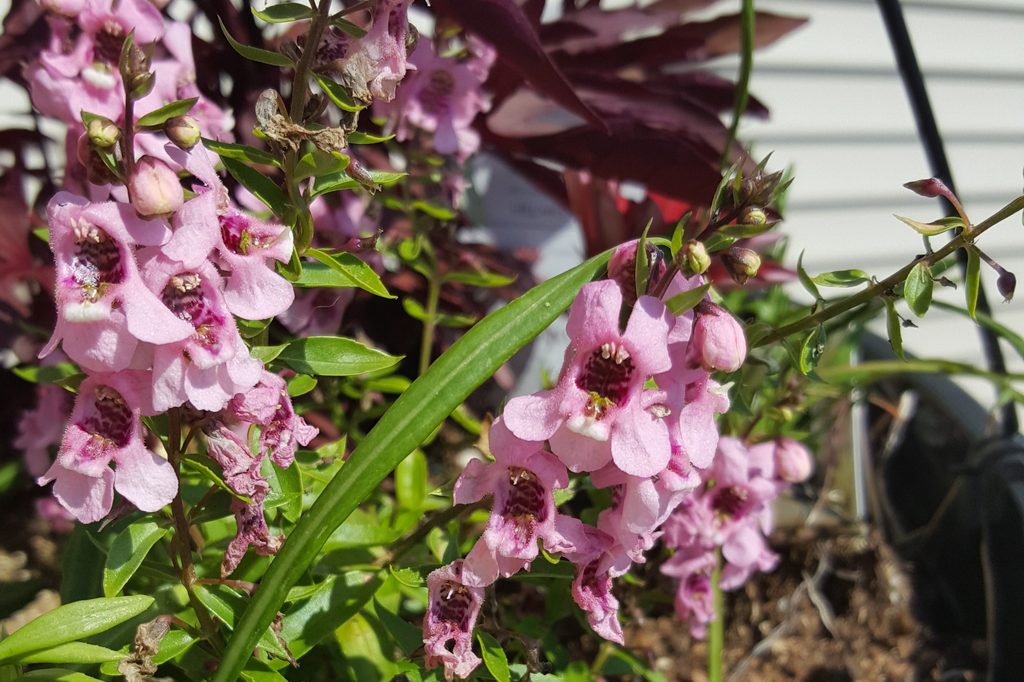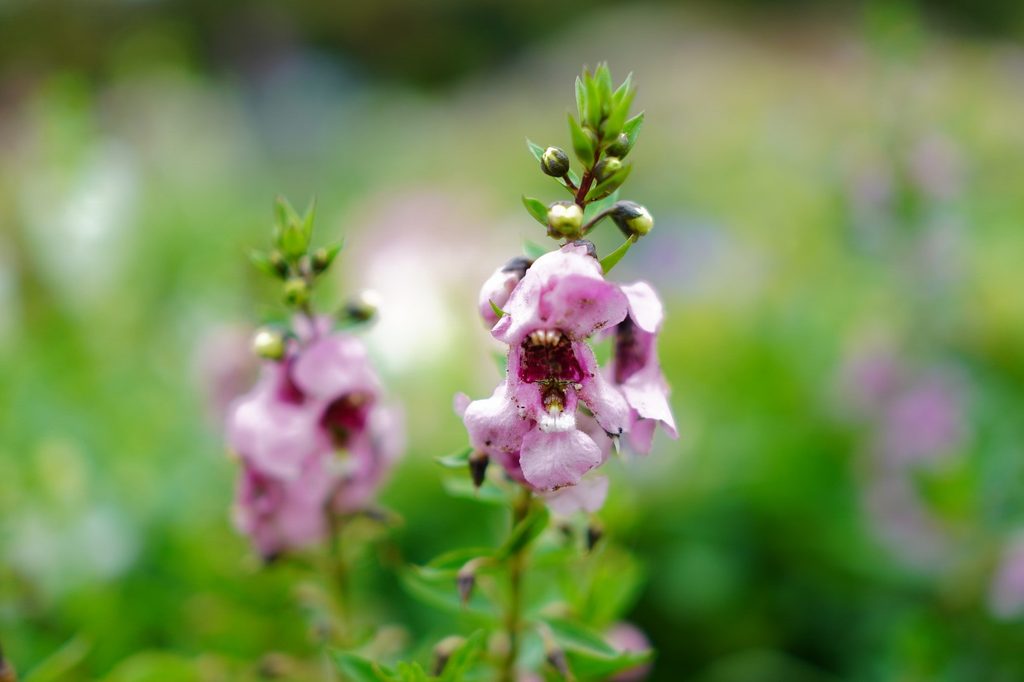
Angelonia is a beautiful flower with a sweet scent that some say is reminiscent of apples. It grows short flower spikes that bloom in shades of purple, blue, pink, and white. Angelonia’s smaller size and lovely colors make it exceptionally popular for use in container gardens and garden borders. To help you get started growing angelonia for yourself, here is a simple care guide.
Planting angelonia
When growing it outdoors, begin planting your angelonia in mid-spring. Although mature angelonia plants can tolerate some cold weather, colder temperatures slow down the germination of their seeds.
You can start angelonia indoors at any time, as long as you keep the seeds and seedlings warm. You can transplant the seedlings in your garden once the weather warms up. If you live north of zone 9, you’ll either need to grow your angelonia in a container or grow it as an annual. Whether indoors or out, make sure your angelonia is growing in full sun and rich, well-draining soil.

Caring for angelonia
Keep the soil moist but not soggy for the first few weeks after planting. Once it is fully established, angelonia is somewhat drought tolerant. However, it does appreciate consistent watering. Applying a layer of mulch around the base of your angelonia can help with water retention. Mulch is also useful for suppressing weeds.
Feed your angelonia lightly during the growing season with a balanced fertilizer or compost. During the fall, adding leaf mulch or leaf mold to the soil can provide both fertilizer and mulch for your angelonia. When the flowers wilt and die, you can remove them to keep your garden looking neat, but it isn’t strictly necessary. The flowers typically fall off on their own once they’re fully dead.

Common problems and solutions
Angelonia is resistant to most pests and diseases, but it can develop powdery mildew and aphid infestations. Powdery mildew is a fungal infection caused by wet leaves and poor air circulation, and it looks like thin white fuzz or powder on the leaves of the plant. You can prevent this by spacing your plants properly to allow air to flow between them and avoiding watering them from overhead. To treat powdery mildew, apply potassium bicarbonate or a fungicide.
Aphids are small sap-sucking insects are a nuisance in small numbers, but they can cause more serious problems in larger infestations. They can spread certain plant diseases that lead to stunted or discolored growth, and they leave behind honeydew that’s a perfect fuel for fungi. You can treat aphid infestations using insecticidal soaps. Aphids are also a major food source for ladybugs, so attracting ladybugs to your yard can keep the aphid population in check.
Angelonia is a gorgeous and easy-to-grow flower that can brighten up any garden. Its hardy nature and resistance to most pests mean you can grow it without worry. Whether you plan to grow yours indoors or out, you’ll be delighted by the fragrant and colorful blossoms of angelonia.


